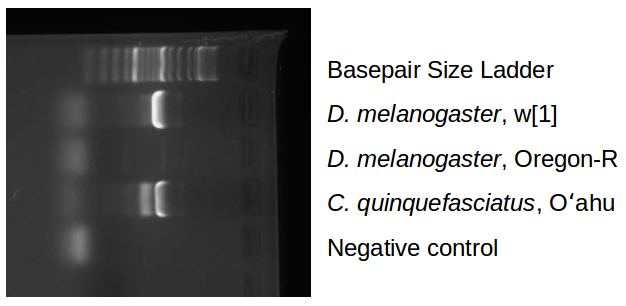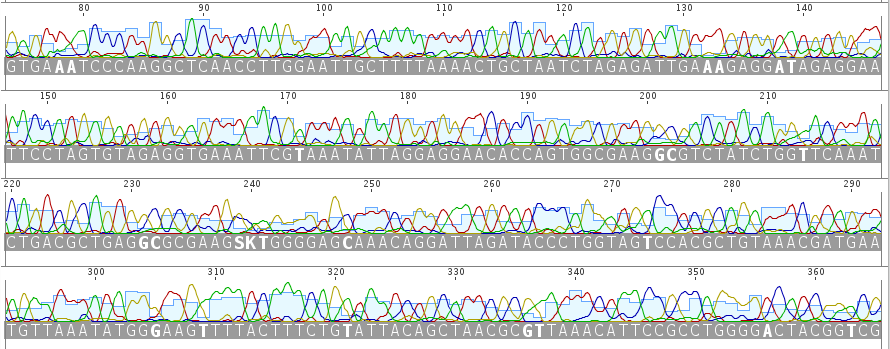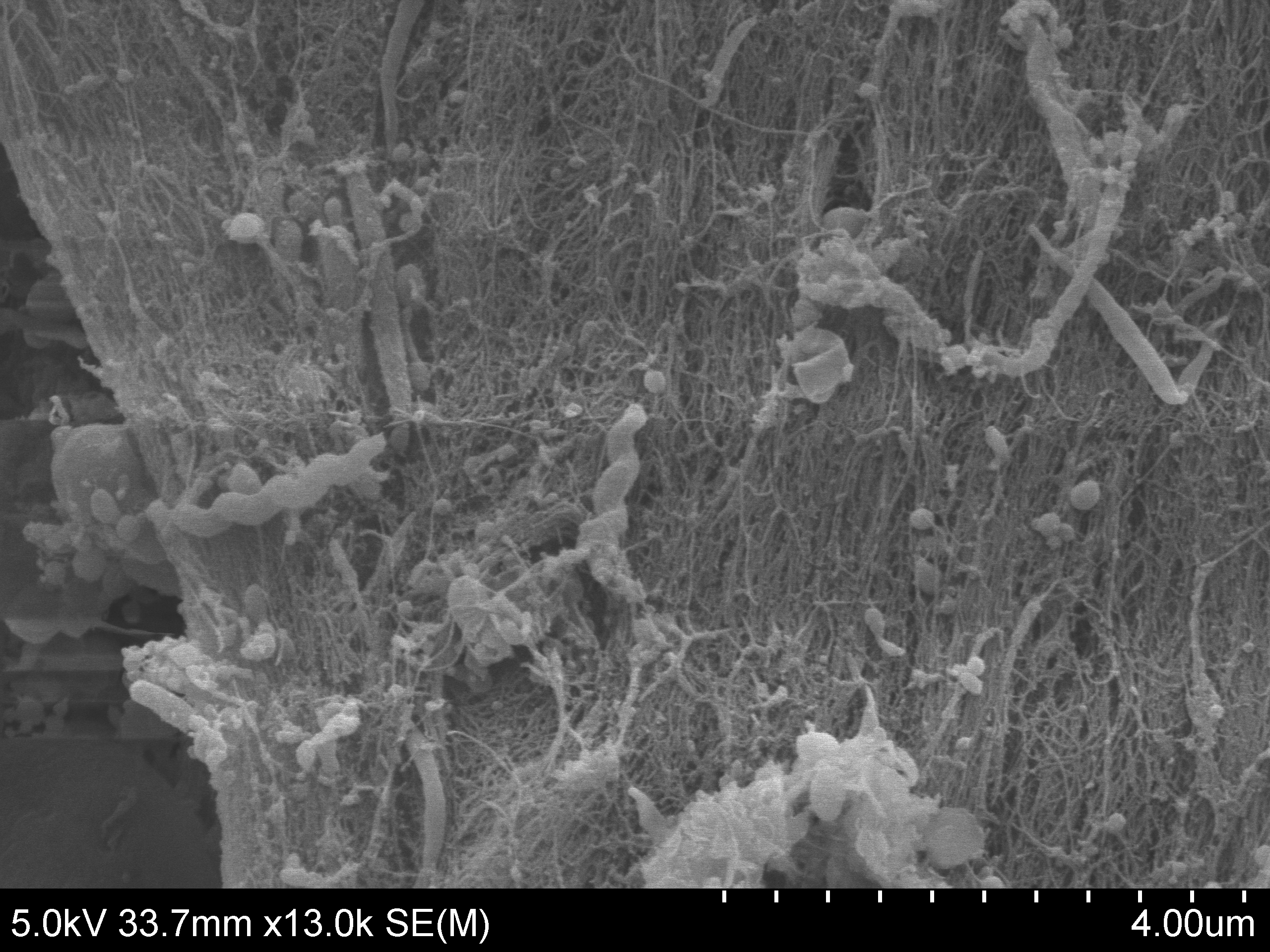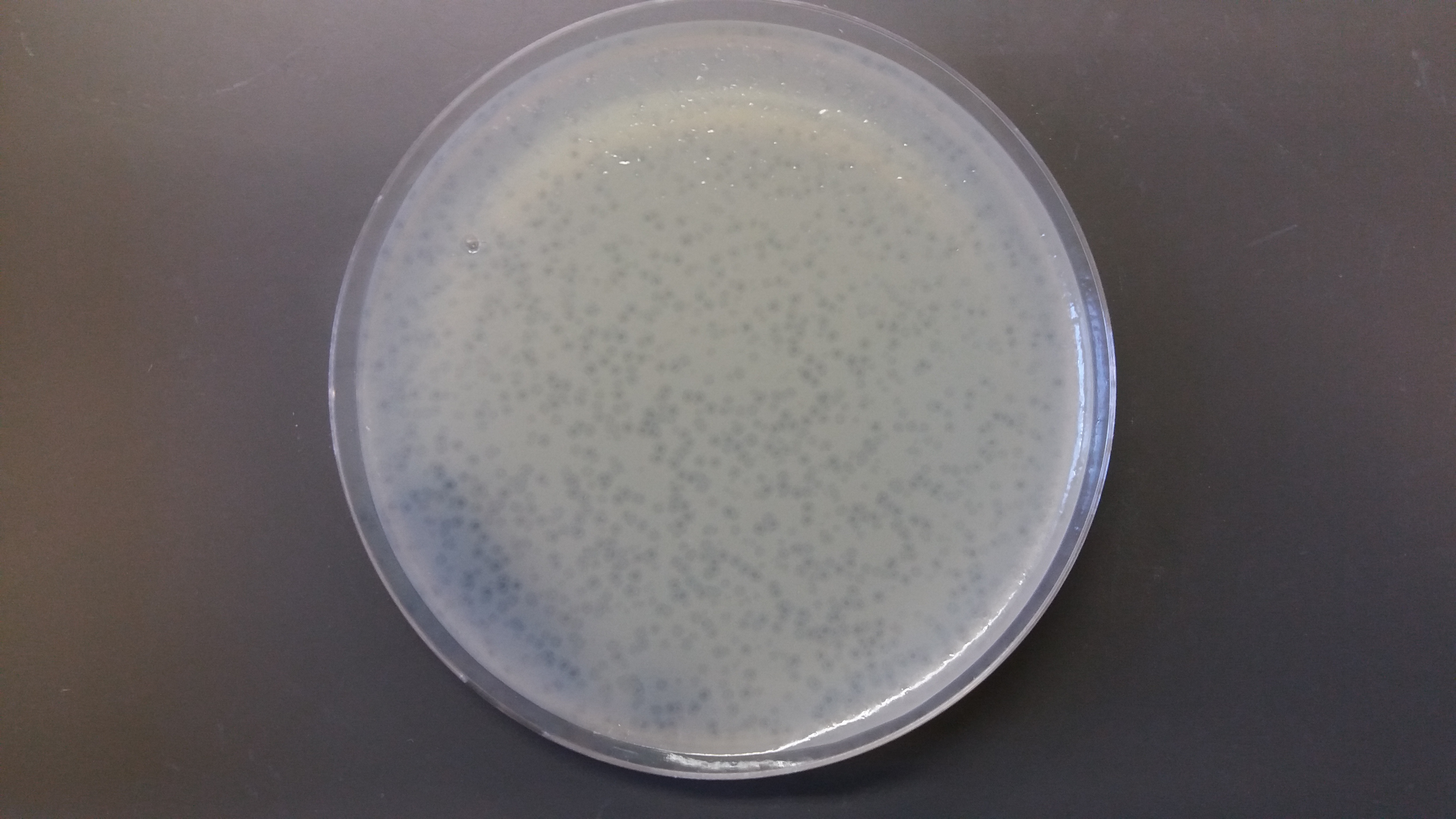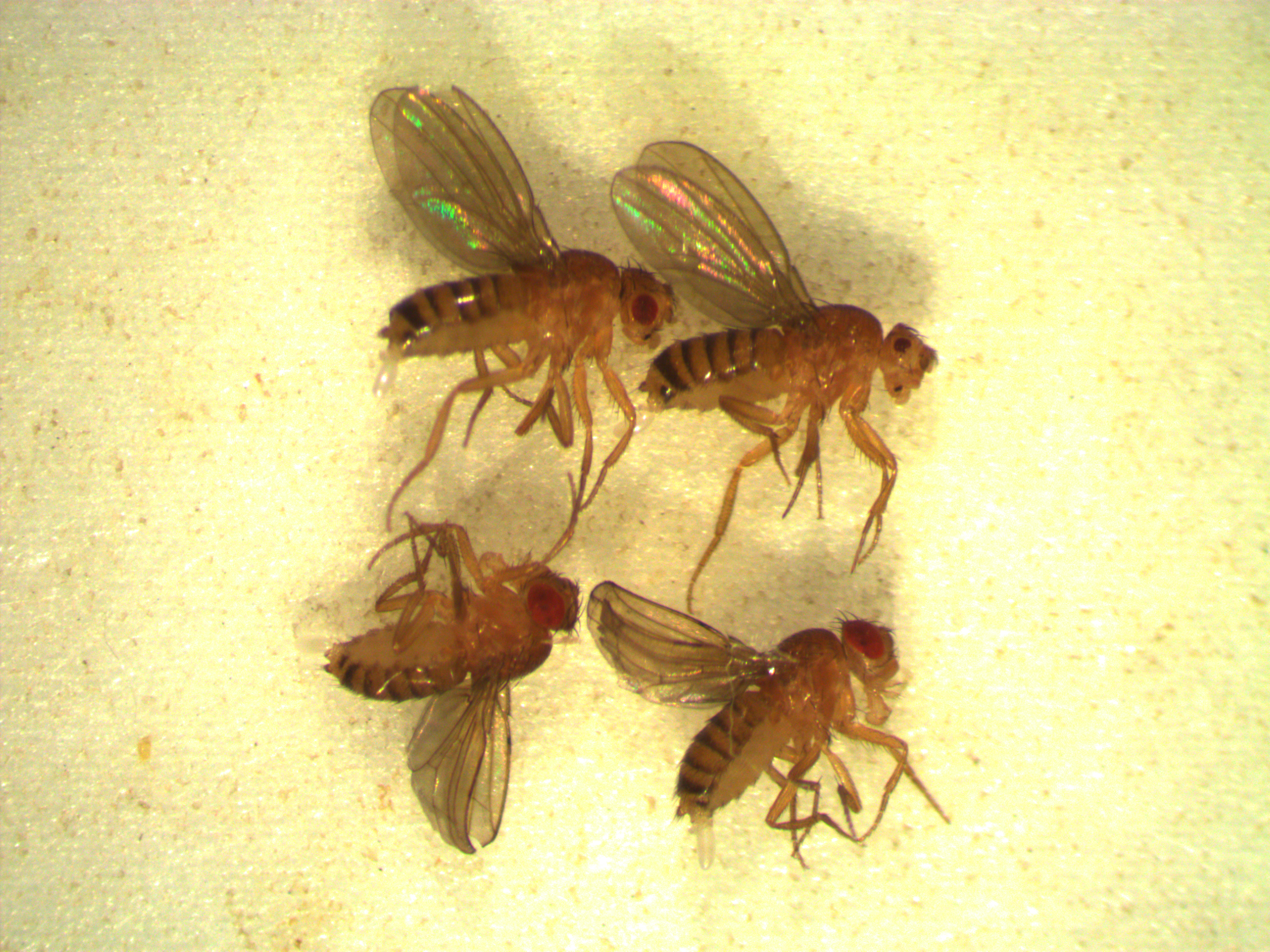We need a source of Wolbachia for injection into the mosquitoes. Using primers from Simōes et al. (2011) Áki and Maria were able to get these PCR products.
The gel is shown sideways with shorter fragments to the left. Our white[1] stock of Drosophila melanogaster is positive for Wolbachia infection. The Oregon-R stock appears to be uninfected. The Culex mosquitoes collected locally here on Oʻahu also appear to be infected and give a double band. We submitted them for sequencing and the Culex sequence came back very messy---consistent with possible super infection of multiple strains. However, the Drosophila w[1] sequence was clear enough to get a basepair sequence.
Here is the full sequence we recovered.
>Dmelwol_w[1]
TAATACGGAGAGRGCTAGCGTTATTCGGAATTATTGGGCGTAAAGGGCGCGTAGGCGRATTAGTAAGTTAAAAGTGAAATCCCAAGGCTCAACCTTGGAATTGCTTTTAAAACTGCTAATCTAGAGATTGAAAGAGGATAGAGGAATTCCTAGTGTAGAGGTGAAATTCGTAAATATTAGGAGGAACACCAGTGGCGAAGGCGTCTATCTGGTTCAAATCTGACGCTGAGGCGCGAAGSKTGGGGAGCAAACAGGATTAGATACCCTGGTAGTCCACGCTGTAAACGATGAATGTTAAATATGGGAAGTTTTACTTTCTGTATTACAGCTAACGCGTTAAACATTCCGCCTGGGGACTACGGTCGCAAGATTAAAACTCAAAGGAATTGACGGGGACCCGCACAAGCGGTGGAGCATGTGGTTTAATTCGATGCAACSCGAAAAACCTTACCACTCCTTGACATGGAAATTATACCTATTCGAAGGGATAGGGTCGGTTCGTCCGGGTTTCACACAGGTGTTGCATGGCTGTCGTCAGCTCGTGTCGTGAGATGTTGGGTTAAGTCCCGCAACGAGCGCAACCCTCATCCTTAGTTACCATCAGTTAATGCTGGGGACTTTAAGGAAACTGCCAGTGATAAACTGGAGGAAGGTGGGGATGATGTCAAGTCATCATGGCTATGAGTGCTACACACGTGCTACAATGGTGGCTACAATGGGCTGCAAAGTCGCGAGGCTAAGCTAATCCCTTAAAGGCCATCTCAGTCCGGATTGTACTCTGCAACTCGAGTGCATGAGTTGATCGCTAGTAATCGTGGATCAGCACGCCACGGTGATAGCTTTCTCGGGTCTG
This appears to be a Group A Wolbachia and is consistent with wMel.
Simōes, P. M., Mialdea, G., Reiss, D., Sagot, M. F., & Charlat, S. (2011). Wolbachia detection: an assessment of standard PCR protocols. Molecular Ecology Resources, 11(3), 567–572.
